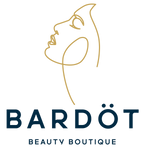Acne and Blemishes

Clear skin doesn’t just happen. While cleansing twice a day helps, your skin often needs multiple modalities to treat the underlying problem. Whether it's caused by hormones, bacteria, excessive oil production or dead skin cells don’t worry we’ve got you covered.
What Causes Acne?
1. Blockage of hair follicles (pores), where sebum (oil) is produced, by dead skin cells
2. Overproduction of sebum
3. Proliferation of P. acnes bacteria and consequent inflammation
Treatment Options
Skin Care Bootcamp: Acne Program
Prescription Medication
Chemical Peels
Microneedling
Medical Facials
FAQS
What is Acne?
Acne is a skin condition that consists of comedones, papules, pustules, and cysts. Acne most commonly develops on areas of the body that contain a lot of sebaceous glands (oil) glands like the face, neck, chest, back and shoulders. Acne usually begins (and is most common) in puberty, but many adults also develop the condition.
1. Blockage of hair follicles (pores), where sebum (oil) is produced, by dead skin cells
2. Overproduction of sebum by the sebaceous glands
3. Proliferation of P. acnes bacteriaand consequent inflammation
What is Non-inflammatory acne?
Blackheads and whiteheads (aka open and closed comedones) occur when a plug made up of sebum and dead skin cells can be seen inside a follicle (pore), but does not cause any inflammation or redness.
Blackheads: If the plug enlarges and stretches the pore, it is referred to as a blackhead. Blackheads aren’t trapped dirt. Rather, the dark colour is a build-up of melanin and oxidized oil.
Whiteheads: When a thin cover of skin traps the plug, it prevents the oil from oxidizing. This keeps it white and creates a whitehead.
What is Inflammatory acne?
When follicles are blocked by sebum and skin cells, the follicular wall is under pressure. If the pressure is great enough, then the follicle wall will break and the contents will spread into the surrounding skin.
When your immune system responds to this bacteria and sebum, inflammatory acne occurs. The degree of inflammation determines the size and redness of an acne lesion.
Papules: Pink or red bumps without a white or yellow centre. Pustules: Red bumps with a white or yellow centre of pus. Pustules are formed when the plug inside a pore traps oil and bacteria, which draws white blood cells to the area to fight infection. Pus is made up of dead white blood cells.
Cysts and nodules: Larger (and often painful) acne lesions that extend into the deeper skin layers. Cysts and nodules can last for months, destroy the follicle and lead to permanent scars. Individuals with this type of acne should see a dermatologist for treatment.











